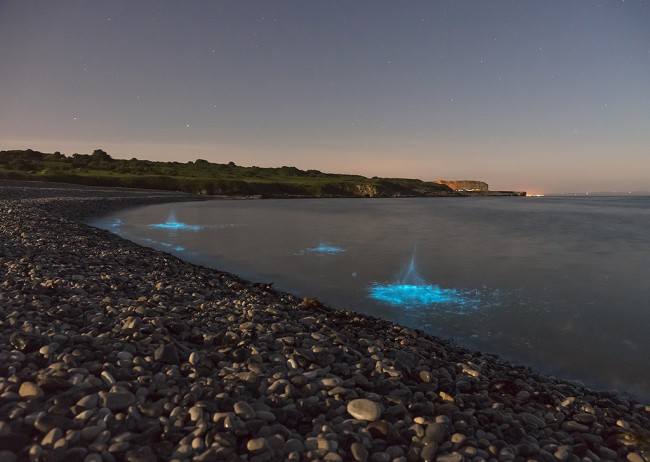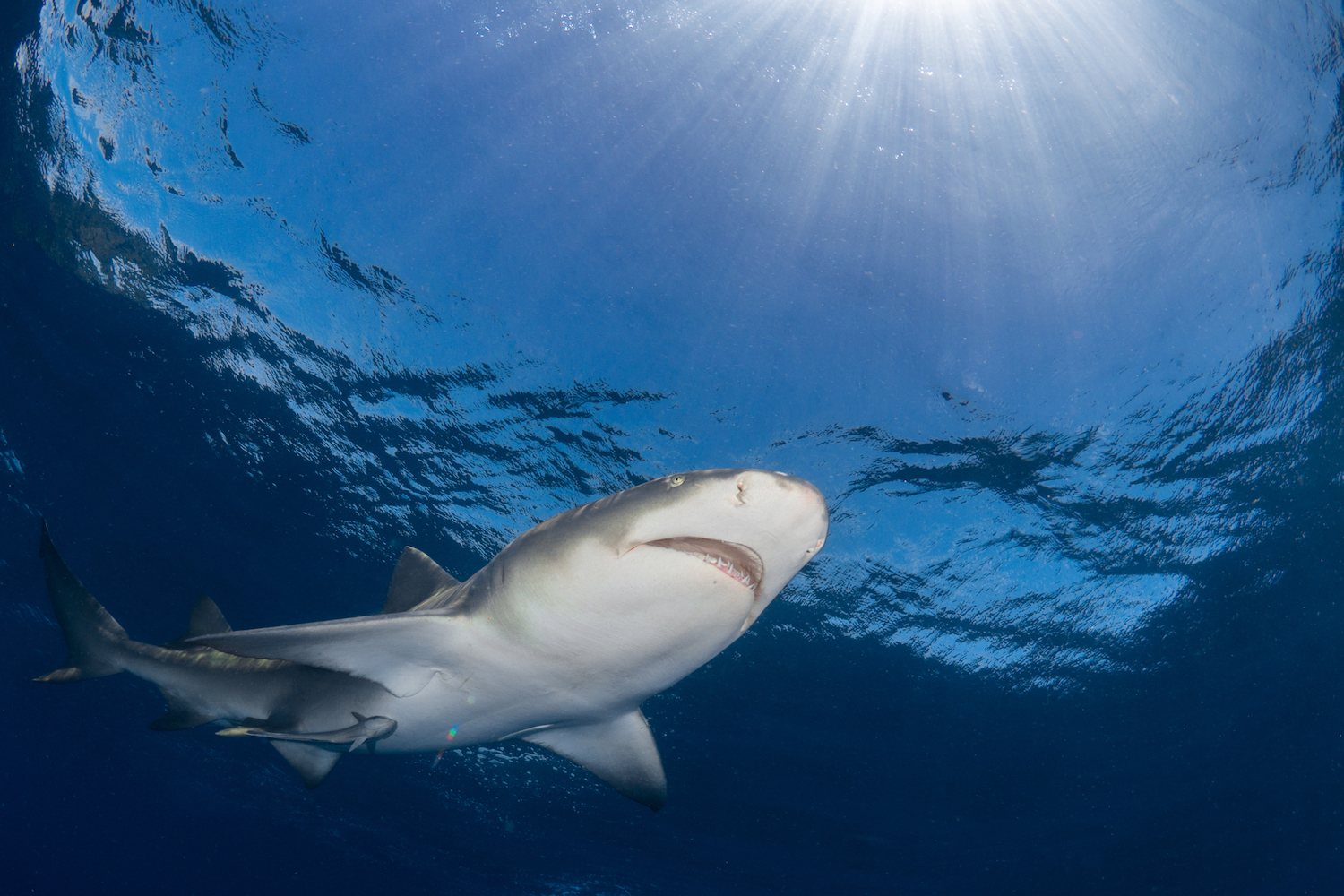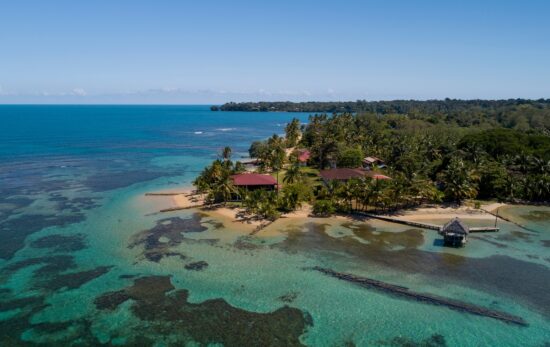Being in the water with a snake may not be top of most people’s diving bucket list, but that doesn’t mean it’s not an underwater experience worth having. Similar to their land-based kin, sharks, and other “deadly” animals, people’s preconceived fear often prevents them from discovering how extraordinary and beautiful these creatures are.
We are going to look at what makes a sea snake a ‘sea snake’, why they’re worth your precious dive time, and give you some of the best places in the world to dive with sea snakes.
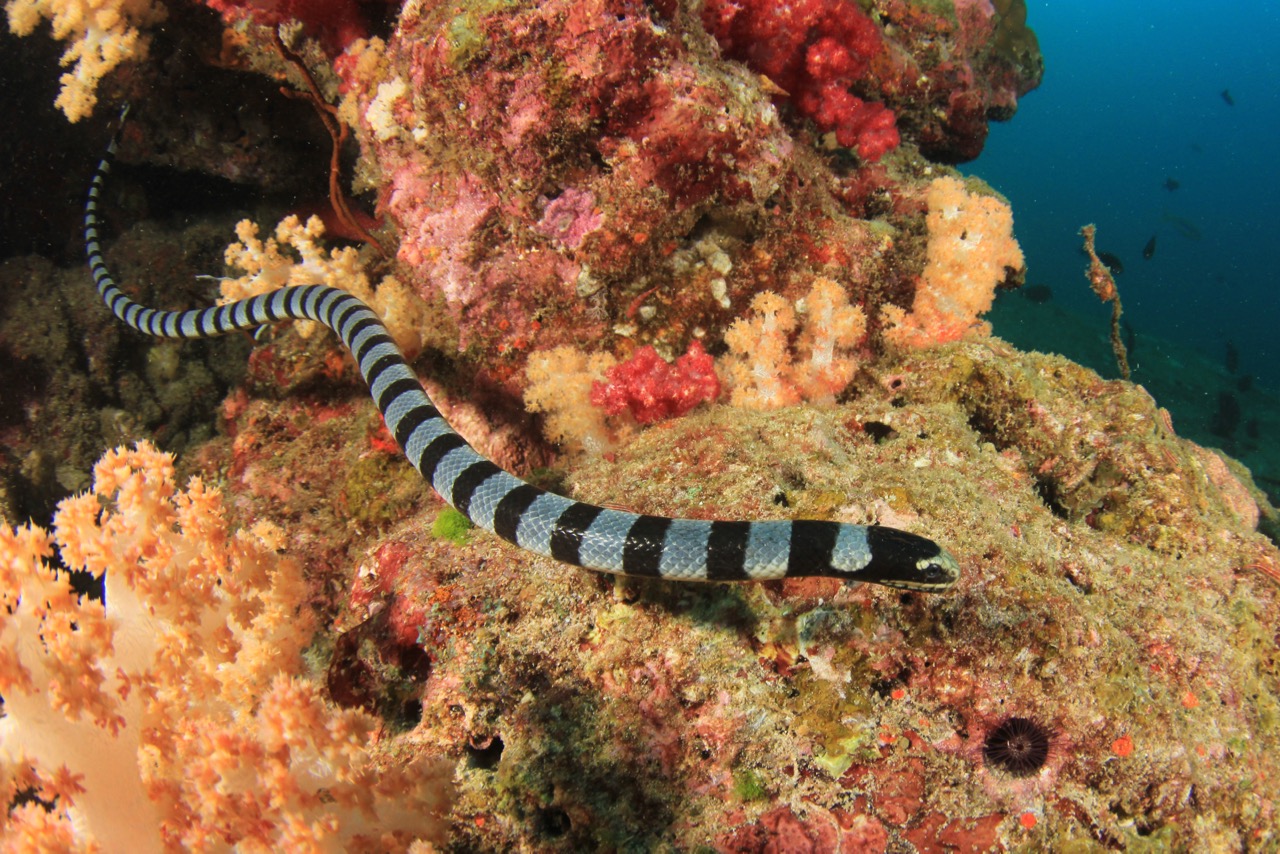
What Is a Sea Snake?
The first thing to establish is exactly what a sea snake is and how they differ from land-based snakes.
Sea snakes make up a total of 69 species and exist in two groups: true sea snakes and sea kraits. The true sea snakes belong to the subfamily Hydrophiinae and are most closely related to Australia’s elapids. Sea kraits belong to the subfamily Laticaudinae and find their closest relatives in Asia’s cobras.
Compared to land-based snakes, both true sea snakes and sea kraits have visible paddle-like tails, an adaptation that helps them propel themselves through the water.
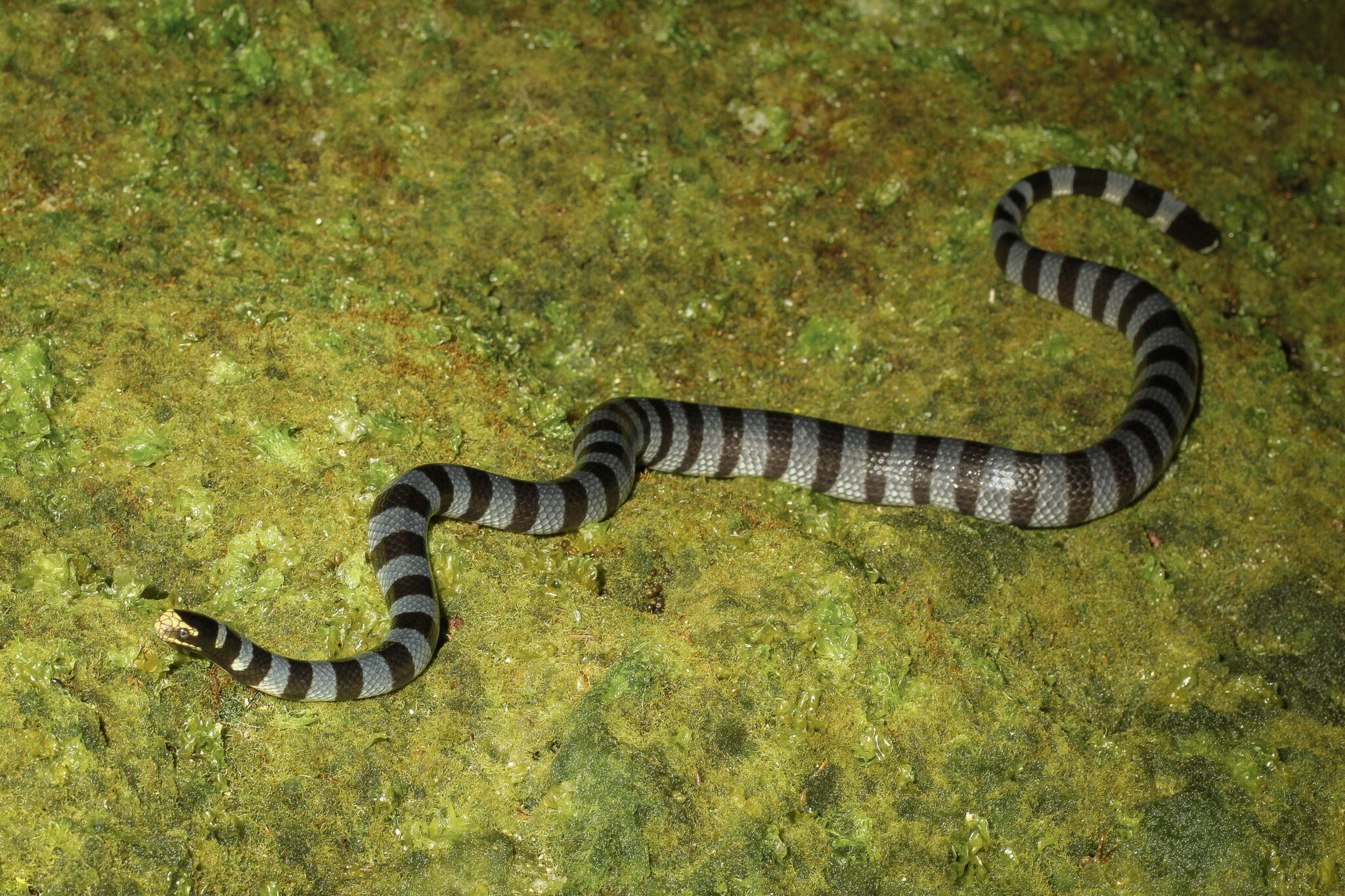
True Sea Snakes vs. Sea Kraits
True sea snakes and sea kraits also show visible differences from one another, with true sea snakes, as the name suggests, being more specialized for life at sea. This can be seen in their laterally-compressed bodies, short, oar-like tails, and valvular nostrils. No part of their lives requires visiting the land, as they can hunt, reproduce, rest, and give birth to live young at sea.
Sea kraits, on the other hand, are classed as semi-aquatic. They still sport the paddle-like tail but have a more cylindrical body shape and lateral nostrils, making them better suited to living both in the ocean and on land. Sea kraits come onto shore to rest, mate and lay eggs.
For the sake of this article, we will refer to both sea kraits and true sea snakes under the all-encompassing banner of “sea snakes.” If you’re interested in discovering more interesting information about sea snakes, check out our blog with 12 Facts about Sea Snakes.
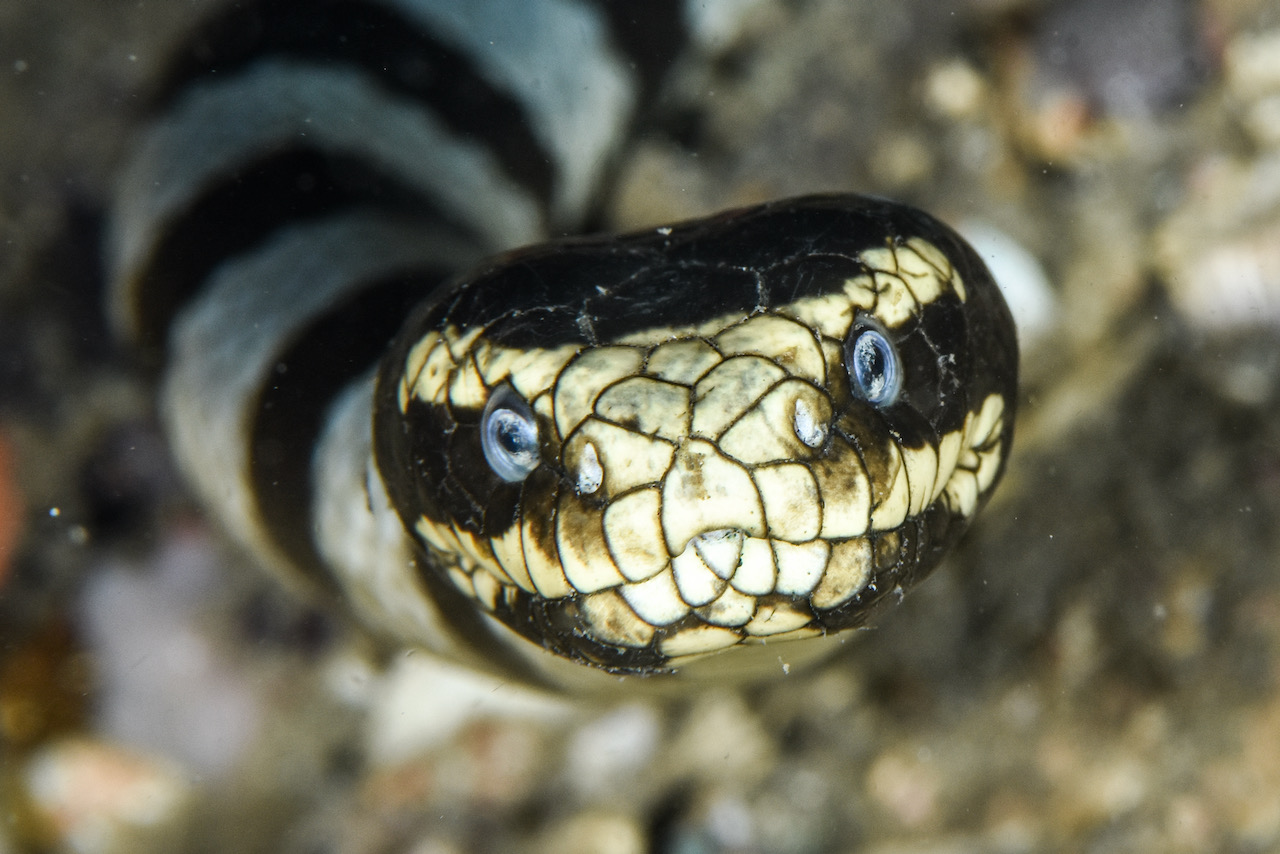
Sea Snakes vs. Snake Eels
Both sea snakes and snake eels have long, cylindrical, and sometimes banded bodies. This makes it very common for people to confuse a snake eel for a sea snake. However, visually telling them apart is pretty easy once you know what to look for. Key physical features, which can quickly differentiate a sea snake from a snake eel, include:
- No Dorsal Fin – Sea snakes do not possess any kind of dorsal fin running along the top of their bodies. If the animal you’re looking at has one, it’s most likely a snake eel.
- Paddle-Shaped Tail – Sea snakes have evolved paddle-like tails as a method of propulsion in the water. Their fishy imposters do not share this adaptation.
- The Need to Breath – Yes, it may require a little more of your time, but if the animal you’re watching is a sea snake, it will eventually need to breathe at the surface. Snake eels are fish and do not come to the surface to breathe. While there are some exceptions, the majority of sea snakes will surface about every 30 minutes.
Furthermore, it’s worth noting that physiologically a sea snake and a snake eel are very different. After all, one is a reptile, and the other is a fish. The above is simply a visual reference for telling them apart.
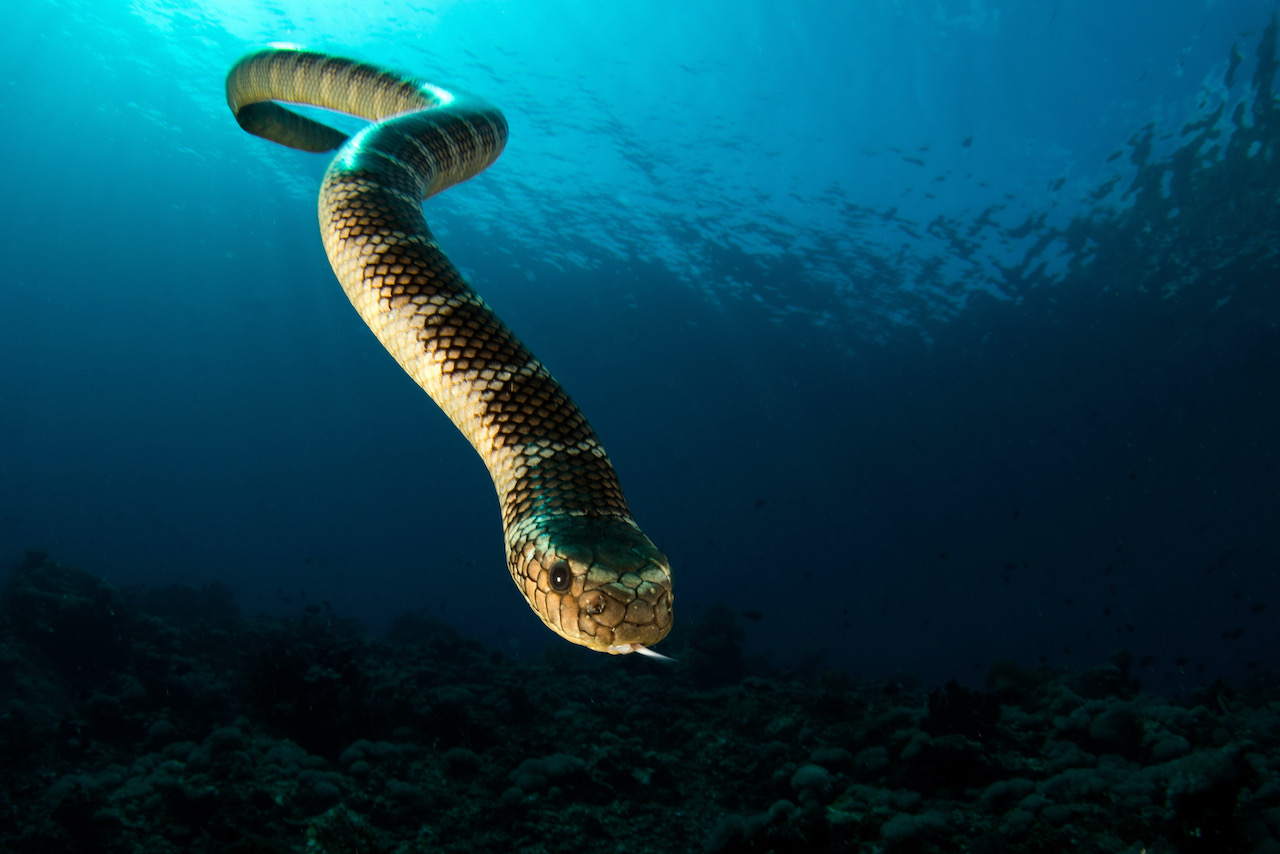
Are Sea Snakes Poisonous?
It’s difficult to talk about sea snakes without mentioning how venomous the majority of species are. Sea snakes possess some of the most toxic venoms found in the natural world. This, of course, makes the sea snake an animal that needs to be respected. Luckily, this respect, combined with their docile nature and the limited amount of contact with people, has thus far resulted in very few bites and fatalities. Bites are usually the result of unusual circumstances, such as the snake being pulled up in a fishing net or handled unnecessarily.
Now that we know what a sea snake is let’s look at where you can find them. Here are our top choices for places to snorkel and dive with sea snakes.
The Top Places to Get in the Water With Sea Snakes
When you look at the geographical distribution of sea snakes, you realize that these marine reptiles can turn up in a lot of places. However, you won’t find a sea snake in the Atlantic Ocean or the Caribbean Sea. If you’re interested in seeing one for yourself, here are some destinations to check out.
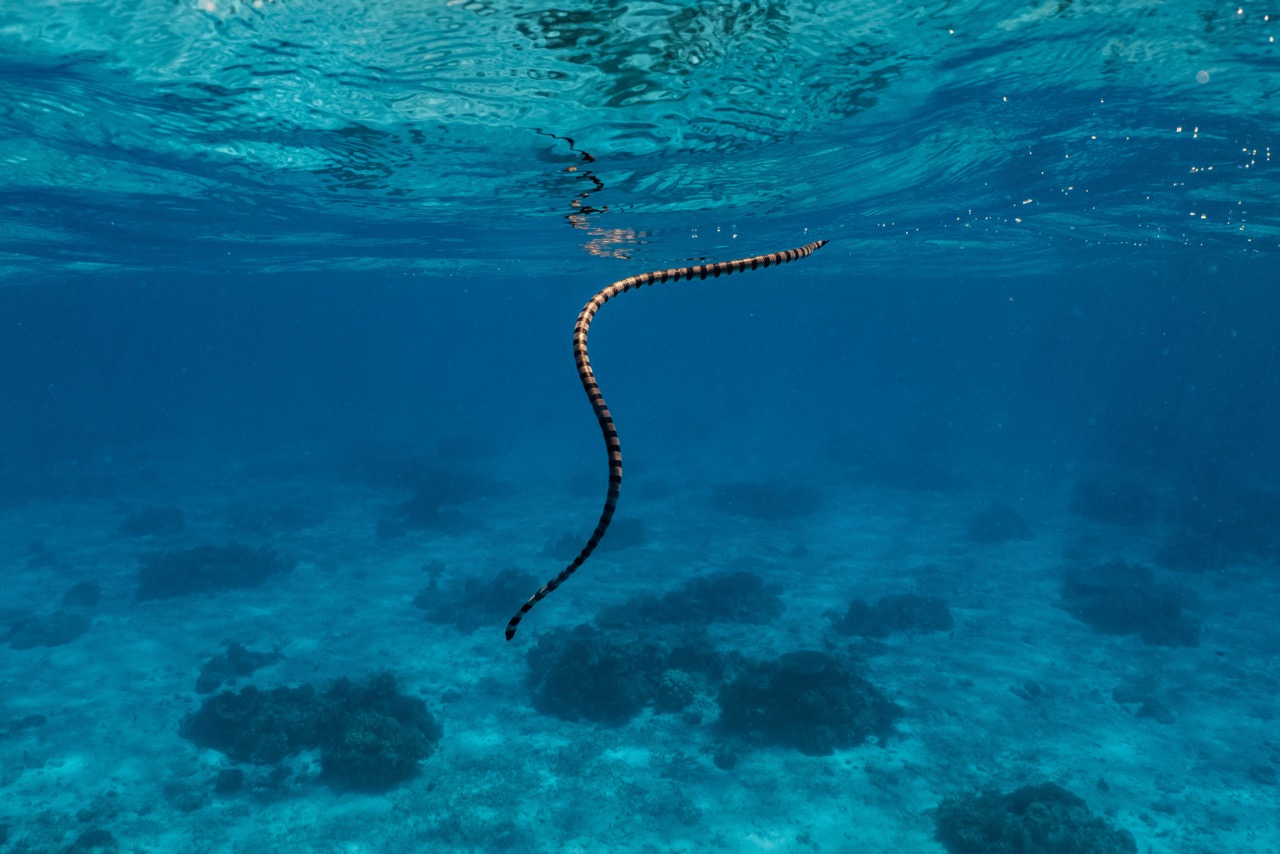
1. The Philippines – Apo Reef
The Philippines is definitely one of the best destinations in the world if you’re hoping to come across a sea snake. You can find sea snakes in Coron, Palawan, Malapascua, Dauin, Puerto Galera, and numerous other popular dive spots. The yellow-lipped sea krait (Laticauda colubrina) is the sea snake you are most likely to encounter here. Additionally, if you’re looking to maximize the number of sea snakes in view, traveling to Hunter’s Rock in June or July will give you a glimpse at the breeding season of these venomous reptiles. At this dive site, it’s possible to see hundreds of snakes on a single dive.
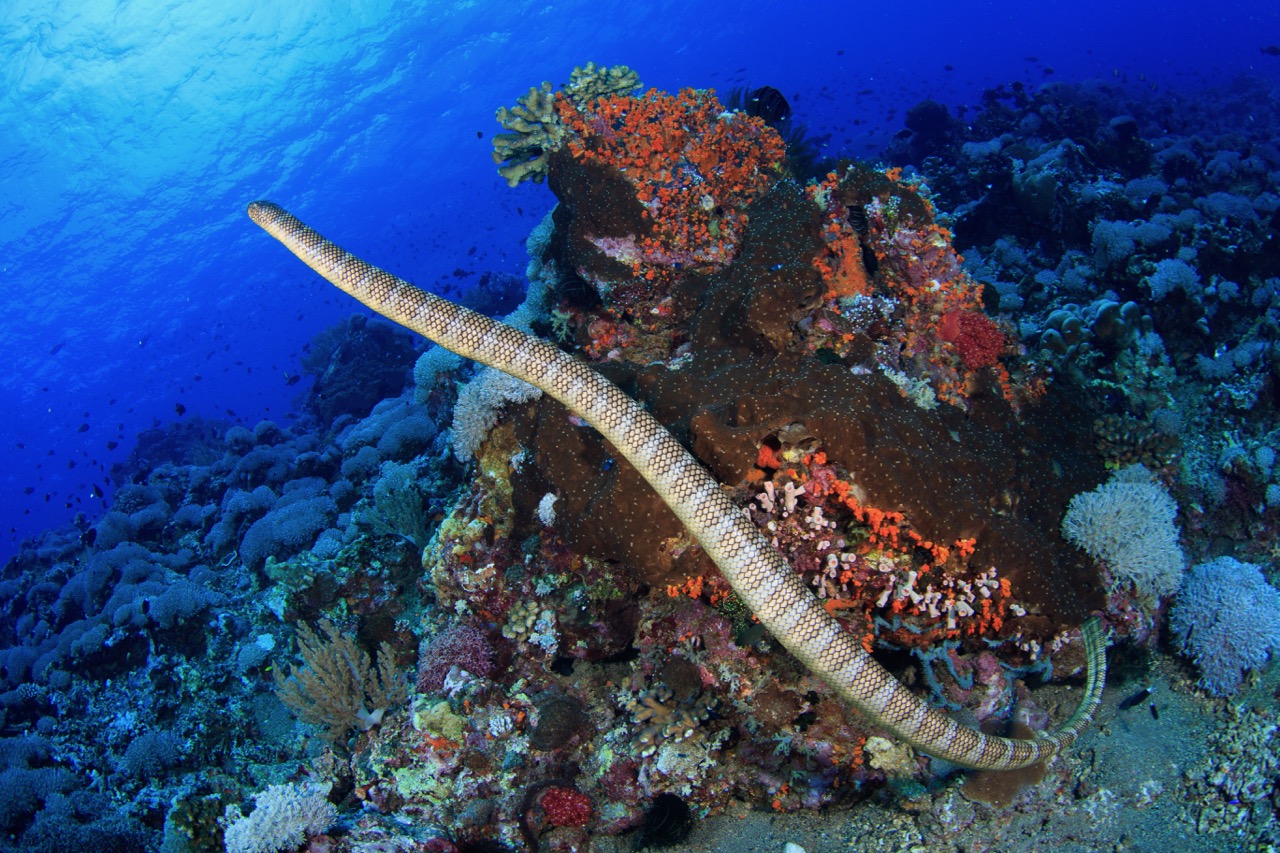
2. Indonesia – Gunung Api
Indonesia is another sea snake-rich destination. Diving in Bali, Komodo, Lombok, or any of the country’s coral-containing waters will likely bring you mask to face with one of the populous yellow-lipped sea kraits (Laticauda colubrina). In addition, Gunung Api and Manuk (or Pulau Manoek) are two liveaboard-only dive destinations that are famous for their sea snake populations. Aggregations usually occur at these remote islands between May and July, although you may find the weather and liveaboard schedules limit your access to these events.
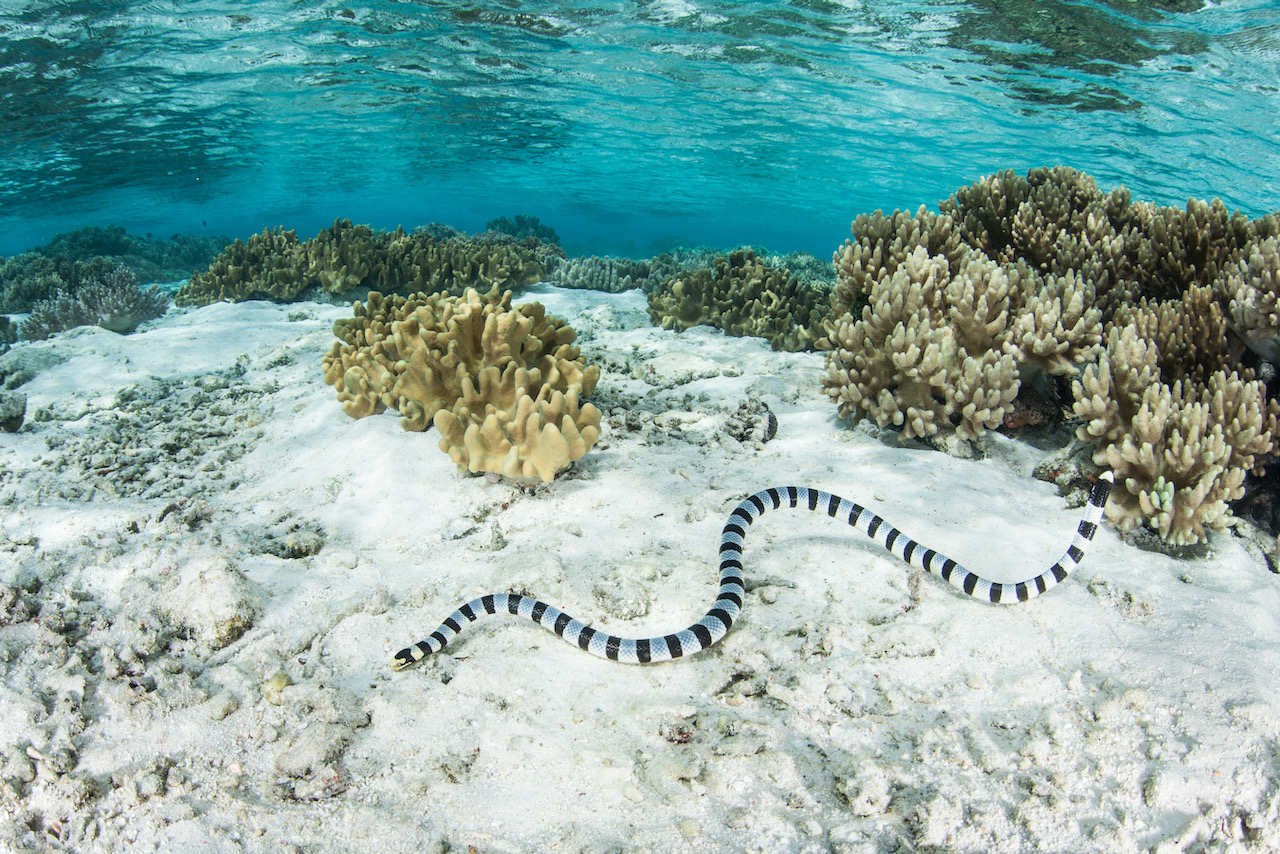
3. Australia – Great Barrier Reef
Sea snakes make up part of the abundance of life which calls Australia‘s Great Barrier Reef home. In fact, the reef is home to 14 species of sea snake. Commonly seen species include the colorful yellow-lipped sea krait (Laticauda Colubrina) and the stunning olive sea snake (Aipysurus laevis). A large population of olive sea snakes frequents the Lighthouse Bommie dive site.
4. Taiwan – Green Island
The waters surrounding Taiwan are home to four different species of sea snake. If you’re looking to get in the water with them, many of Taiwan’s surrounding islands offer adventures to combine cultural and underwater experiences. Green Island (綠島) sits 33 kilometers off Taiwan’s west coast. The island is well known for its population of sea snakes, and this gives you a good chance of meeting one under the waves when diving or snorkeling here.
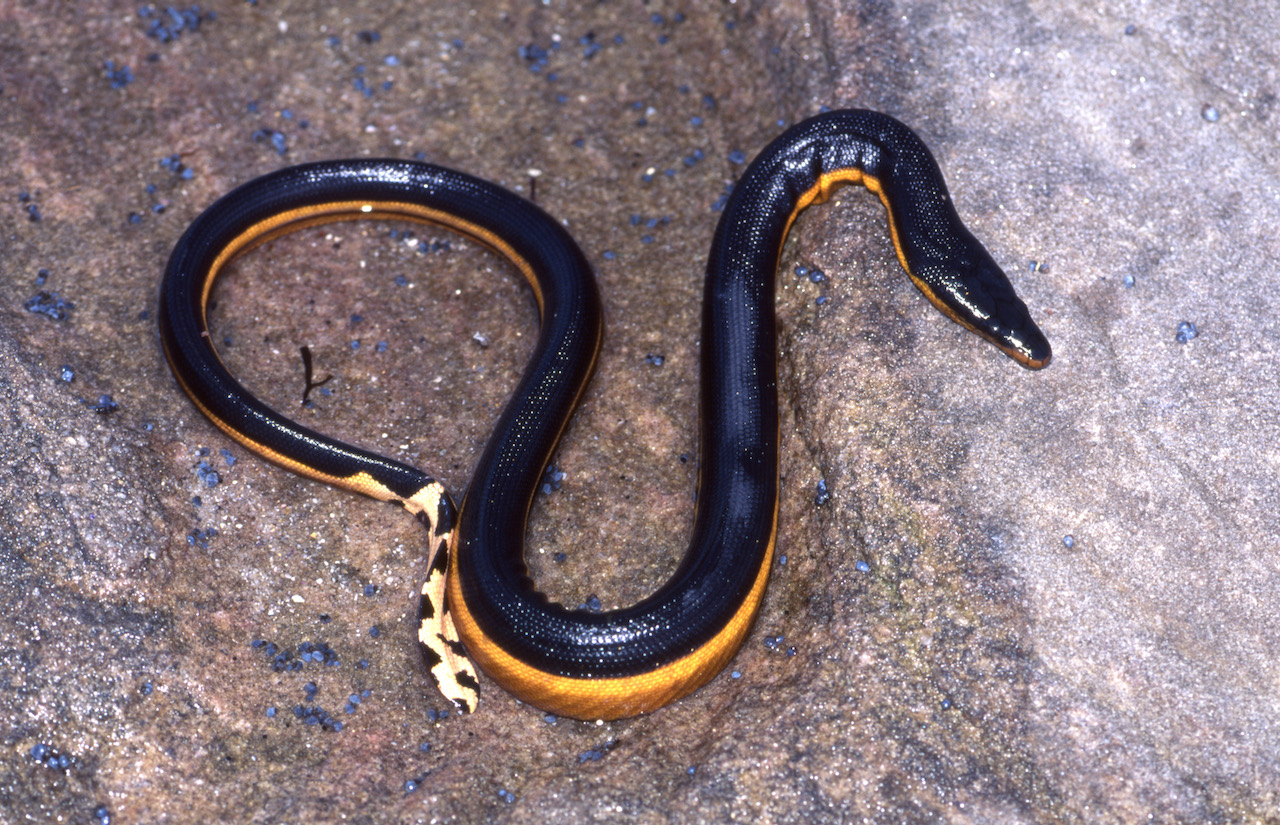
5. Costa Rica – Pacific Coast
One of the world’s most visually striking snakes frequents Costa Rica’s Pacific coast. The yellow-bellied sea snake (Hydrophis platurus) is a pelagic species with a unique look. These open-water snakes sport long beaks, have a distinctive bicolor pattern, and use currents to get around, catching prey when the opportunity arises. Occasionally, it’s possible to see the snakes during a safety stop in the area. However, it’s far more likely you’ll see these snakes during your surface intervals or while traveling by boat to a dive site – on the water’s surface. And even though the chance of encountering one of these rather striking reptiles is a lot lower than seeing other species of sea snakes in the other destinations on our list, the chance to dive with pelagic sea snakes may be enough to entice reptile lovers or pursuers of unique wildlife to give it a try in Costa Rica.
Now that you know about sea snakes and where to find them, you’re ready to get first-hand experience diving or freediving with these fascinating creatures. Why not complete the Underwater Naturalist Course at the same time? Locate a PADI Dive Shop today and start creating your own underwater story.
Just remember to treat these venomous animals with respect. As with all marine life, keep your hands off, don’t touch, and maintain good buoyancy.
